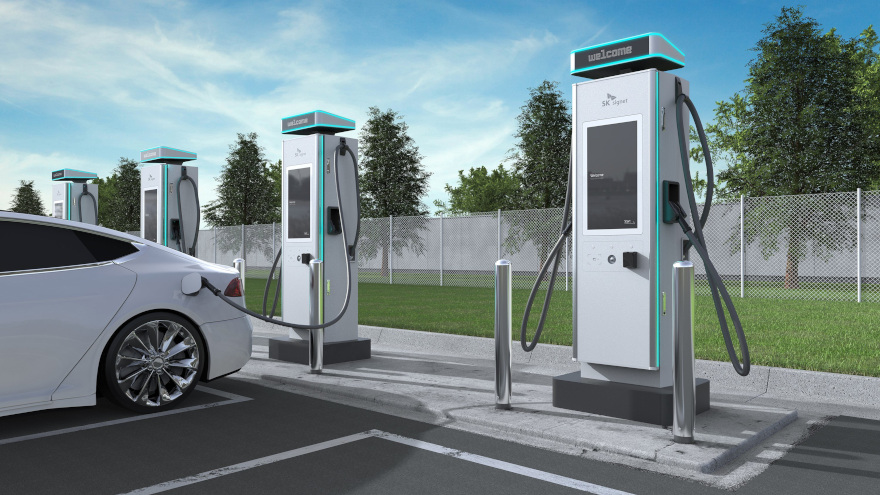Two new reports are challenging consumer perceptions — and doubts — about electric vehicles.
J.D. Power’s latest E-Vision Intelligence Report and a new survey by CarGurus addressed consumer concerns about EV charging and range issues and found the perceptions don’t always match reality.
The CarGurus survey asked 1,050 car shoppers about three common perceptions — about EV range, cost and the belief that most of the opinions expressed about EVs are based on experience — and comparing their responses to survey results and facts from other sources.
When it comes to range and charging, CarGurus said the majority of respondents underestimated how far the average EV can go on a charge.
The survey showed 58% said they believed the median range of a 2023 model EV is 250 miles or less — the U.S. Department of Energy estimate is 270 miles — while 27% said 251-300 miles and 15% overestimated the median range at more than 300 miles.
CarGurus pointed out that federal government data shows people drive an average of 259 miles per week and 80% of the survey respondents said they drive 250 miles or less per week, meaning a single charge from the average EV would be more than enough to last those drivers for a week.
“In multiple surveys by CarGurus and its sister company Autolist, consumers have repeatedly made clear that they don’t think EVs have enough range to suit their lifestyle,” CarGurus head of consumer insights David Undercoffler said in the report. “This is a key challenge EVs have always faced. Despite the recent headwinds for electric vehicles, it’s clear that many existing models would be more than adequate for consumers’ weekly use.
“Since a majority of car shoppers underestimate EVs’ median range, it creates an opportunity for the EV industry — automakers, car dealerships, electric charging companies, etc. — to boost EV adoption by making this case to consumers.”
Survey respondents were also asked to select the reasons they might be hesitant to consider an EV, with 60% selecting range and access to a charging network – the two most popular answers.
The charging aspect was the focus of the J.D. Power study, which reported customer satisfaction with public charging infrastructure surged in the first quarter of 2024, rising 16 points to 663 on a 1,000-point scale from the previous quarter for Level 3 charging and nine point for Level 2.
Both are the largest quarter-over-quarter increases in satisfaction with public charging since J.D. Power began collecting that data in 2021.
While significant improvements were reported in the speed and ease of charging and overall availability of chargers, the most noteworthy improvement was in the reliability of the equipment. The report said charging failures due to station outages and equipment malfunctions fell from 71% in Q4 2023 to 59% in Q1 2024.
“Consistently for the past four years, the top reason consumers cite for not considering an electric vehicle is lack of charging station availability,” J.D. Power analysts said, “and bad experiences with out-of-service equipment, failed payment systems and difficult-to-access charger locations are the most common complaints of EV owners.
“That trend may be starting to shift, however, as customer satisfaction with public DC fast charging and public Level 2 charging networks has improved dramatically in the first quarter of 2024.”
J.D. Power noted that gain in satisfaction was driven by non-Tesla networks. While Tesla’s Supercharger network still holds its perennial place at the top of the satisfaction rankings with an impressive score of 736 (down one point from the previous quarter), the non-Tesla scores jumped 19 points to 572.
The Supercharger network has long been a part of Tesla’s dominance of the U.S. EV market; the report noted the top five EV models for which charging station availability is cited as a primary driver of purchase consideration are all Teslas.
But with other charging facilities improving their performance and Tesla’s recent decisions to lay off its entire Supercharger team and slow down the growth of its network, that domination, which currently includes 61% of the nation’s public fast chargers, could be in jeopardy, J.D. Power said.
“While Tesla is the clear leader in the DCFC charging game, Tesla’s share of the fast-charging market is not set in stone,” the analysts said. “By opening access to its North American Charging Standard to other manufacturers, Tesla may see its overall share of the market decline. With the right level of investment in expansion and continued improvements in customer satisfaction, competitors such as Electrify America, ChargePoint and others could pose a real challenge to the Supercharger network.”
In addition, the report said, the Supercharger network is a large part of Tesla’s brand appeal.
“Should Tesla’s Supercharger network experience a significant setback or increased competition from challenger brands,” the report said, “it could have a significant effect on a core component of the brand’s value proposition.”

